In December last year, Nick and I embarked on a nine-day adventure to China, a destination that often evokes mixed reactions. While many, especially Singaporeans, perceive China as ‘uncool’ or ‘uncivilized’ due to misconceptions about technology restrictions and social norms, we discovered a country that was both fascinating and frustrating in equal measure.
Our journey began in Beijing, driven by a lifelong dream: to climb the Great Wall. But our adventure took an unexpected turn when, on the very day of our flight, we spontaneously decided to extend our trip to Inner Mongolia. The allure of experiencing the desert and grasslands in the heart of winter proved too tempting to resist.
What followed was a whirlwind of unexpected encounters, cultural clashes, and breathtaking landscapes. China, with its vibrant energy and unique blend of ancient traditions and rapid modernization, left an indelible mark on us. This post will share our incredible journey, from the awe-inspiring Great Wall to the mesmerizing landscapes of Inner Mongolia, encouraging you to approach China with an open mind and discover its true essence.
Also read: 7D6N Guangzhou Itinerary: A Guide to Exploring Culture, Cuisine, & More!
1. Getting the right ticket
a. Flight
Reaching Beijing from Singapore is surprisingly convenient. Numerous airlines, including budget carriers like Scoot and AirAsia, offer direct flights, making the journey relatively quick and affordable.
b. Train
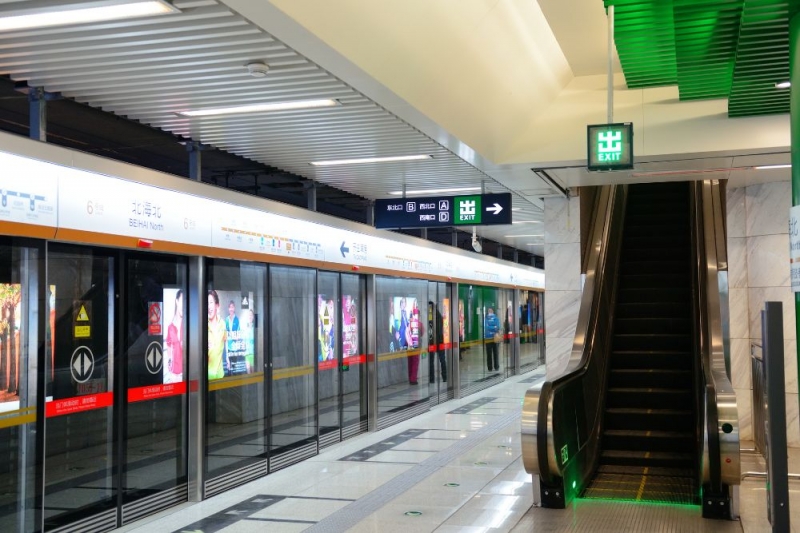
Image credit: rabbit75_cav
Once in Beijing, consider taking the high-speed train to Hohhot, Inner Mongolia. This is a comfortable and efficient way to travel, offering stunning views of the Chinese countryside. Book your tickets in advance, especially during peak season, and arrive at the station well before departure to navigate the crowds and ensure a smooth boarding process.
Remember to double-check the departure station as Beijing has multiple train stations (Beijing South, Beijing West, etc.). Be mindful of strict security checks and arrive at the station at least 30 minutes prior to departure to avoid missing your train.
If you do miss your train, don’t panic! You can usually easily change your ticket at the station at a minimal extra cost. This flexibility can be a lifesaver if unexpected delays occur.
2. Getting a shelter
a. Beijing: Beijing Downtown Backpackers Accommodation
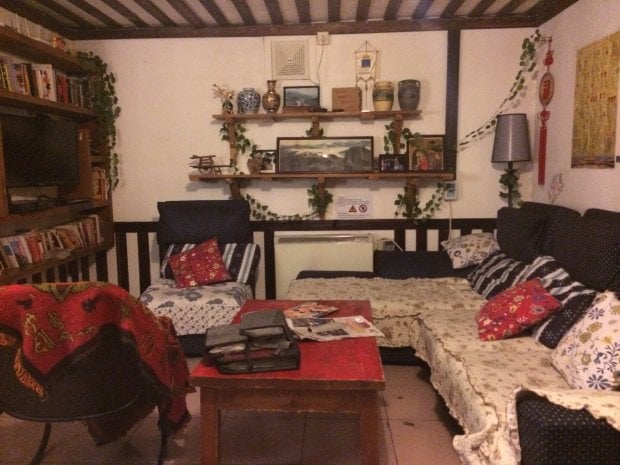
For our Beijing stay, we opted for the social and budget-friendly option of a hostel. We chose Beijing Downtown Backpackers Accommodation, and it proved to be an excellent choice.
Located in the heart of Nan Luo Gu Xiang, a charmingly preserved ancient street known for its vibrant nightlife and proximity to attractions like Houhai and Shichahai, the hostel offered a convenient base for our explorations.
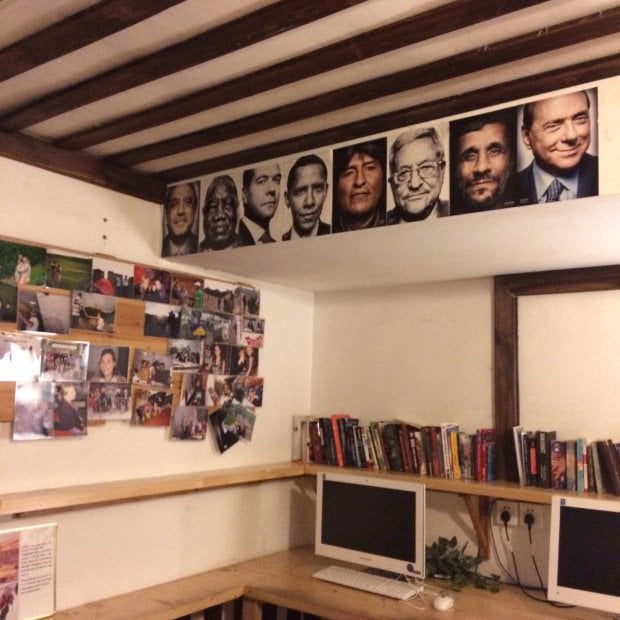
The hostel provided incredible value at just CNY180 (SGD36) per night for a double room. Not only was it affordable, but it also included a complimentary breakfast, a significant bonus for budget travellers.
The hostel staff were incredibly helpful, even assisting us with booking our train tickets to Hohhot at a very reasonable service fee, saving us the hassle of navigating the train station. They also offered a range of exciting tours, such as camping on the Great Wall.
b. Inner Mongolia: Hohhot, Inner Mongolia 呼和浩特
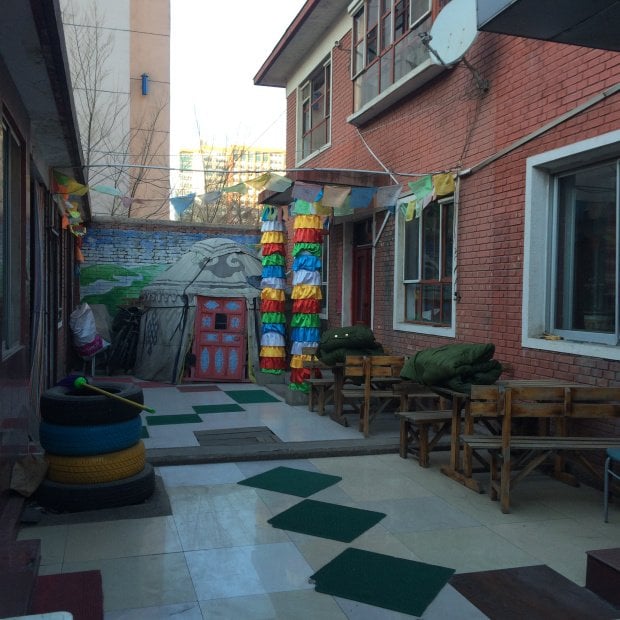
Anda Guesthouse in Hohhot was undoubtedly the highlight of our trip. This family-run gem felt more like staying with friends than in a typical hostel. The warm hospitality of the owners, Yongli and her husband (affectionately known to us as “大叔” – “Big Uncle”), made us feel instantly at home.
We were incredibly grateful for their prompt assistance when we made a last-minute decision to extend our trip to Inner Mongolia. Despite our short notice, Yongli quickly responded to our email, providing us with the information and reassurance we needed to proceed with our adventure.

The guesthouse offered exceptional value, with spacious double rooms. The rooms were so large they could easily accommodate four people!
The common area was a cosy haven for socializing, while the well-equipped kitchen and the charming balcony with stargazing opportunities added to the appeal. Free bike rentals were a fantastic perk, allowing us to explore the local area at our own pace.
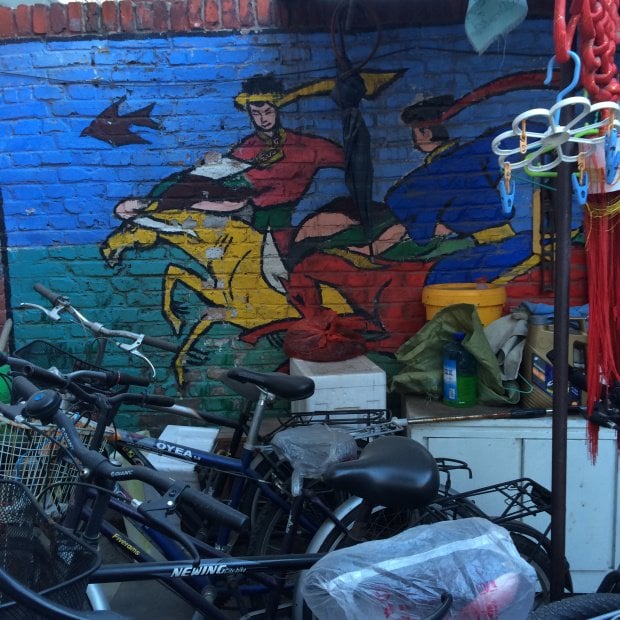
However, the true highlight was the incredible tours organized by Yongli and her husband. They personally guided us through the stunning Inner Mongolian landscapes, sharing their insights and cultural knowledge. We enjoyed authentic experiences, including staying in traditional Gers (yurts) with no modern conveniences, providing a truly immersive cultural experience.
3. Getting around
Navigating Beijing presented its own set of challenges. While the city boasts an efficient subway system with affordable fares, navigating the bustling crowds can be quite an experience. Be prepared for a bit of a squeeze during peak hours!
Remember to download a VPN before arriving in China, as access to popular platforms like Facebook, Instagram, and Google may be restricted. This proved invaluable when we relied on Baidu Maps to find our way around after getting lost.
Air quality can be a concern in Beijing, so it’s advisable to wear a mask, especially during periods of high pollution. While we were fortunate to experience mostly clear skies during our visit, it’s always best to be prepared.
a. What to do / where to go in Beijing
1. The Great Wall of China
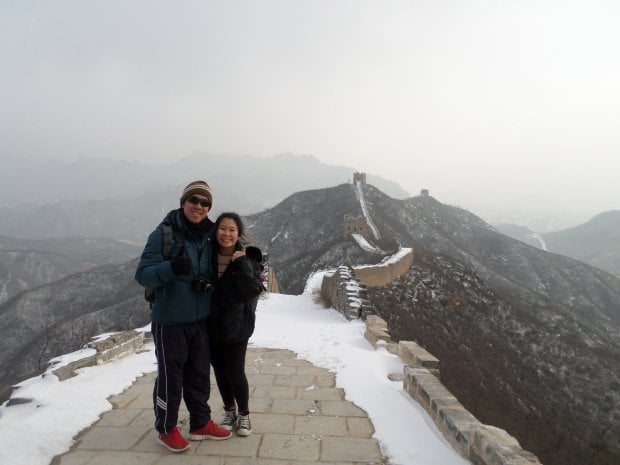
Climbing the Great Wall of China is an absolute must for any traveller. As the adage goes, “He who has never been to the Great Wall is not a real man.”
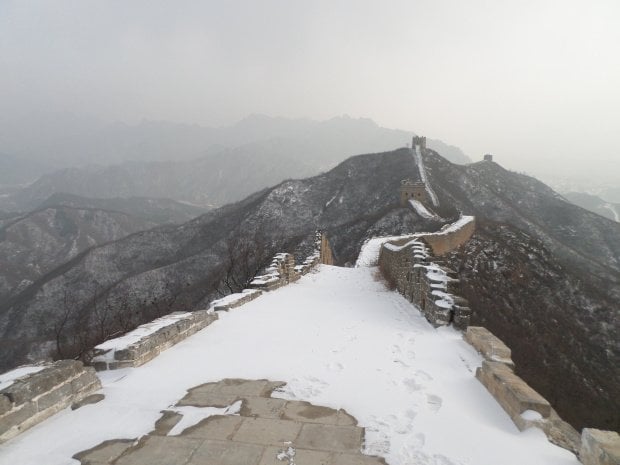
We opted for the Jinshanling section, a less crowded alternative to the more popular tourist sites. This section offers a truly authentic experience, with its well-preserved ancient walls and breathtaking views. The hike itself was challenging but rewarding, and we were fortunate to witness the first snowfall, creating a truly magical atmosphere.
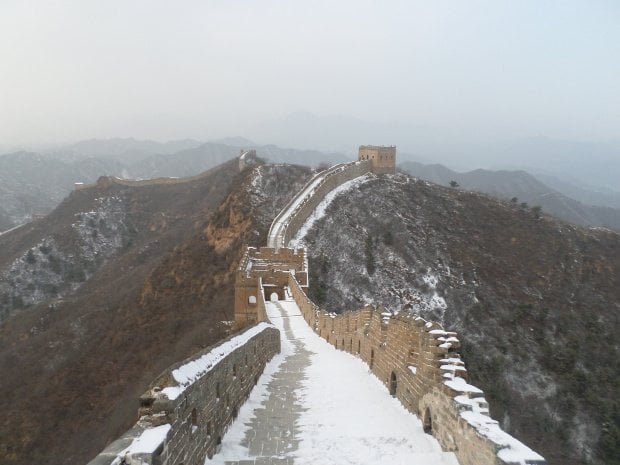
We booked a guided tour through our hostel, which included transportation, entrance fees, and an English-speaking guide. This proved to be a cost-effective and convenient option, allowing us to fully immerse ourselves in the experience without the hassle of independent travel.
The Jinshanling section provides a unique opportunity to experience the Great Wall in its raw and historical glory, a memory that will stay with us forever.
Also read: Unknown Secrets Behind the 5 Great Wonders of the World
2. The Forbidden City 故宫
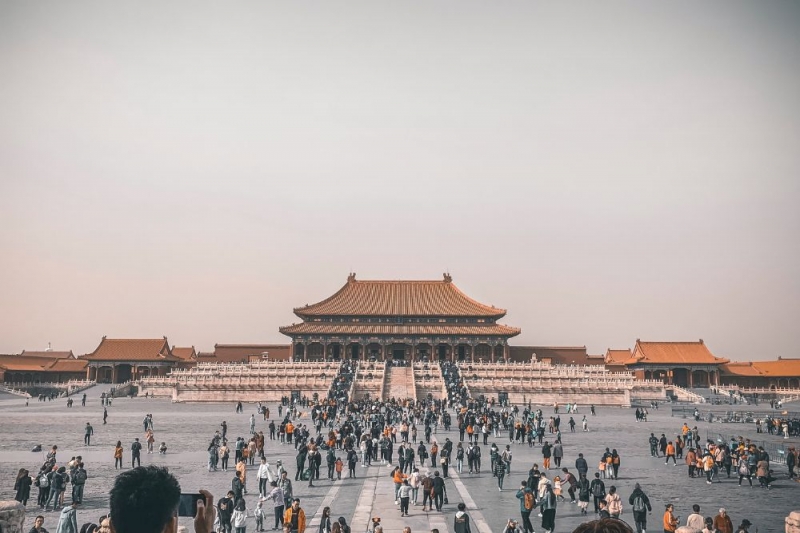
Image credit: Kit Sanchez from Pexels
The Forbidden City, the former imperial palace of China, is a must-see for any visitor to Beijing. This sprawling complex, once the residence of emperors for centuries, offers a glimpse into the grandeur and majesty of Imperial China.
Exploring the Forbidden City is an awe-inspiring experience. The sheer scale and intricate architecture of the palace complex are truly breathtaking. While the entire complex is vast, the portion open to the public provides a fascinating window into the lives of emperors and their courts.
3. Jingshan Park 景山公园
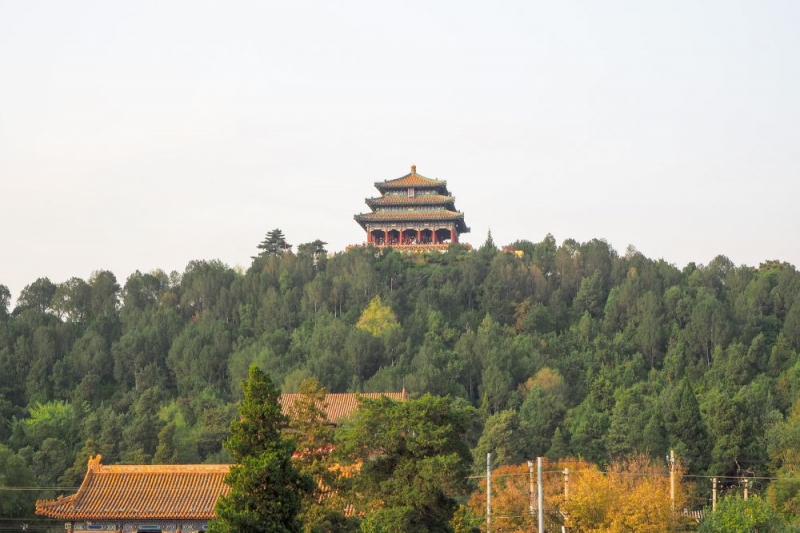
Image credit: Nopparat Panorpattanachai from Getty Images
Jingshan Park, a historic 57-acre park perched atop a hill, offers unparalleled panoramic views of the Forbidden City. Ascend the park’s slopes for a breathtaking panorama, especially during sunrise or sunset. While the fog often obscures the view, the park itself holds its own charm, with its ancient trees, tranquil paths, and traditional Chinese architecture.
4. Tian An Men Square 天安门
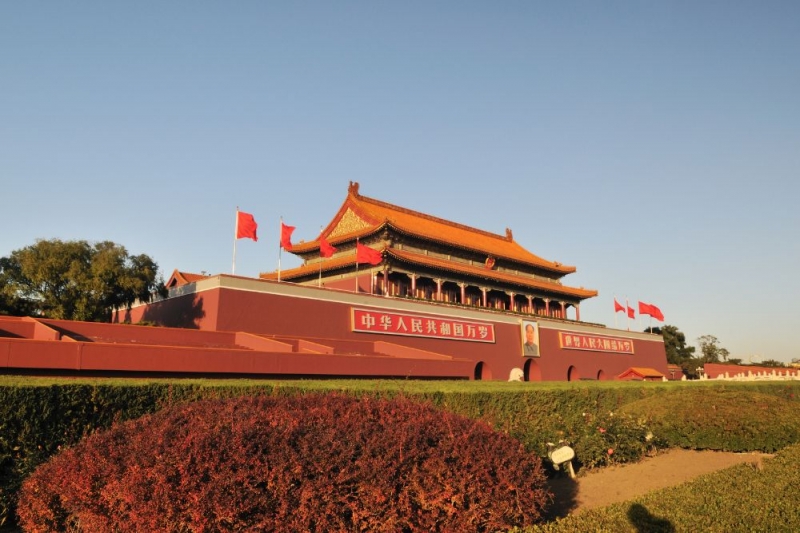
Image credit: kongxinzhu from Getty Images
Even if you are not a history junkie like me, do visit this square because this is the world’s largest city square! The square is surrounded by Soviet-style monuments and government buildings and also museums! There is a flag-raising and lowering ceremony at dawn and dusk at the north end of the square. There will be security checks at the entrance of the square and you have to show your passport so bring your passport! Spot Mao in the square too!
5. Temple of Heaven 天坛
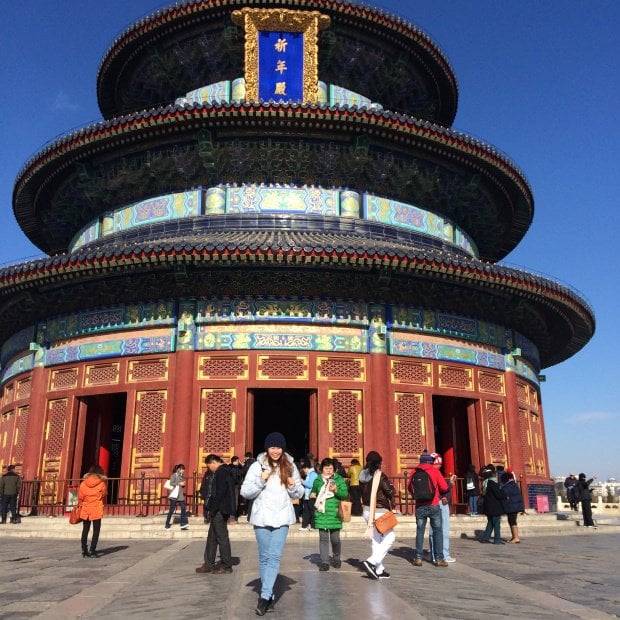
The Temple of Heaven literally means the Altar of Heaven. The complex was visited by the Emperors of the Ming and Qing dynasties for annual ceremonies of prayer to Heaven for good harvest. Admission fee of CNY50 (SGD11). And yay for the blue sky that day!
6. Yong He Gong (Lama Temple) 雍和宫
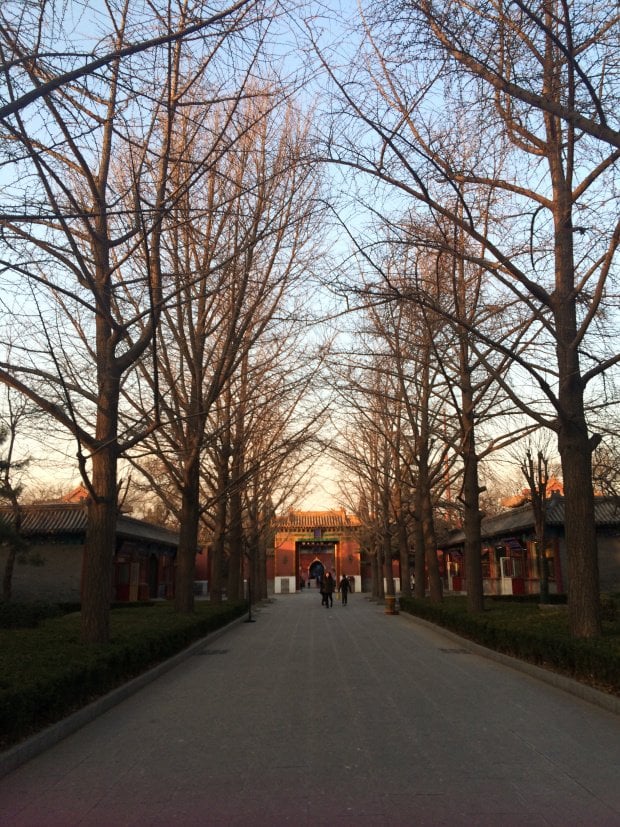
The Lama Temple, a prominent Tibetan Buddhist monastery in Beijing, is a must-visit. This magnificent complex houses the awe-inspiring 26-meter tall White Sandalwood statue of the Maitreya Buddha, a Guinness World Record holder.
7. Hou Hai 后海
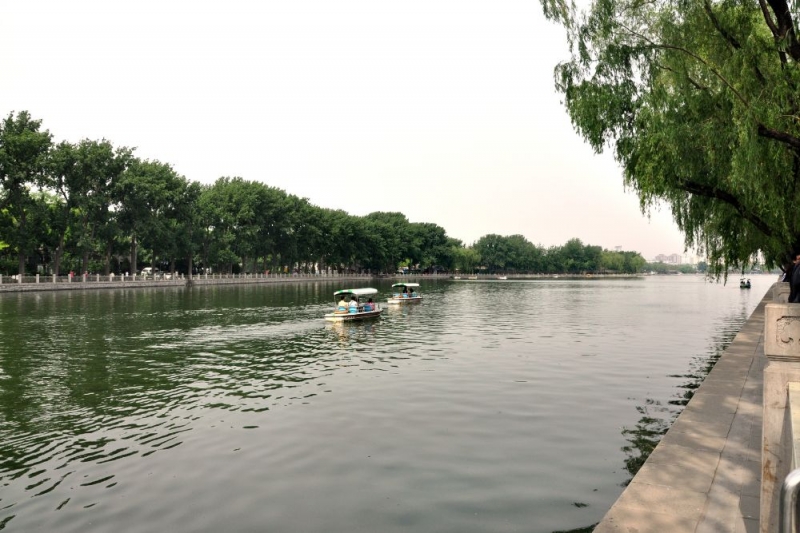
Image credit: tc397 from Getty Images
The hutong neighbourhood around Houhai has become known for its nightlife as many residences along the lake shore (frozen the time we were there) have been converted into restaurants, bars, and cafes. The area is especially popular with foreign tourists visiting Beijing and is also often visited by the expatriate community and the younger generations of locals. In the winter, the frozen lake is also opened up for ice skating in the day!
8. Eating street food and shopping along Dong An Meng 东安门, Wang Fu Jing 王府井, Gui Jie 鬼街, Nan Luo Gu Xiang 南锣鼓巷 & Shi Cha Hai 什刹海
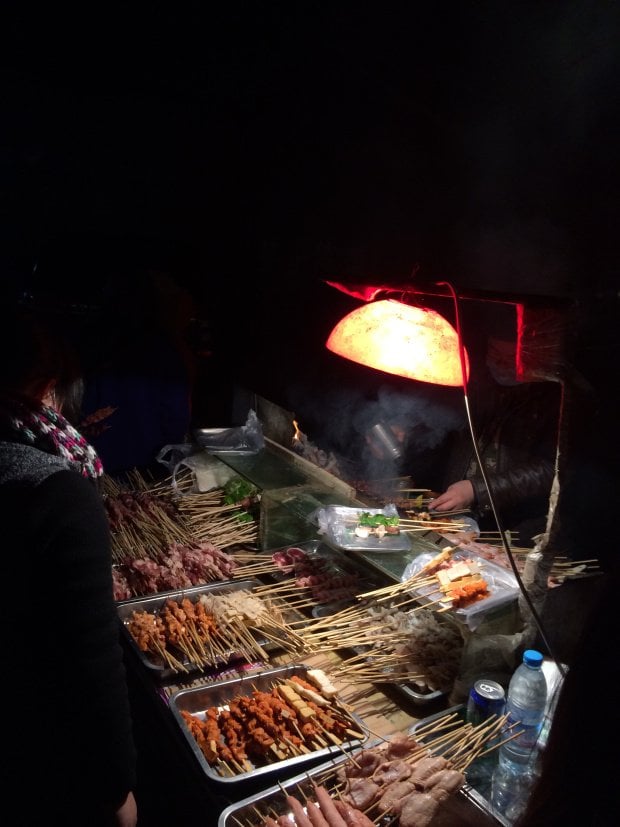
Beijing is a true haven for food lovers. While Wangfujing and Nanlougu Xiang are popular tourist spots, I recommend venturing beyond the usual tourist traps to discover authentic Beijing cuisine.
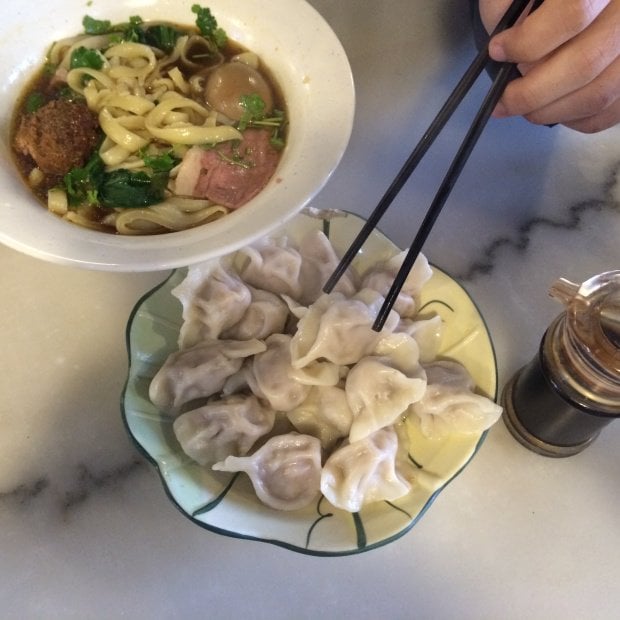
Dong’anmen and Gui Jie offer a more local and authentic dining experience. Be adventurous and try local specialities like “goubuli” steamed buns, “xian bao du” (boiled lamb tripe), “kao ya juan” (roast duck rolls), “kao leng mian” (crispy hand-wrap noodles), and “zhajjiang mian” (minced meat noodles). Don’t miss the opportunity to sample some of the more adventurous street food options, such as fried insects, for a truly unique Beijing experience.
9. Strolling along Bei Hai Park 北海公园
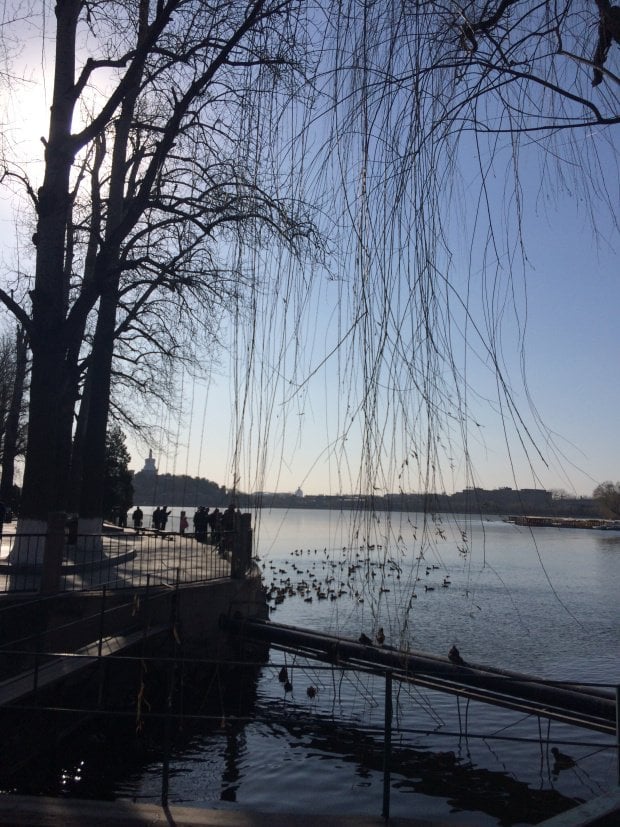
Beihai Park, a former imperial garden nestled near the Forbidden City, is a must-visit for any visitor to Beijing. This expansive park, one of the largest Chinese gardens, boasts a rich history and features numerous historically significant structures, palaces, and temples.
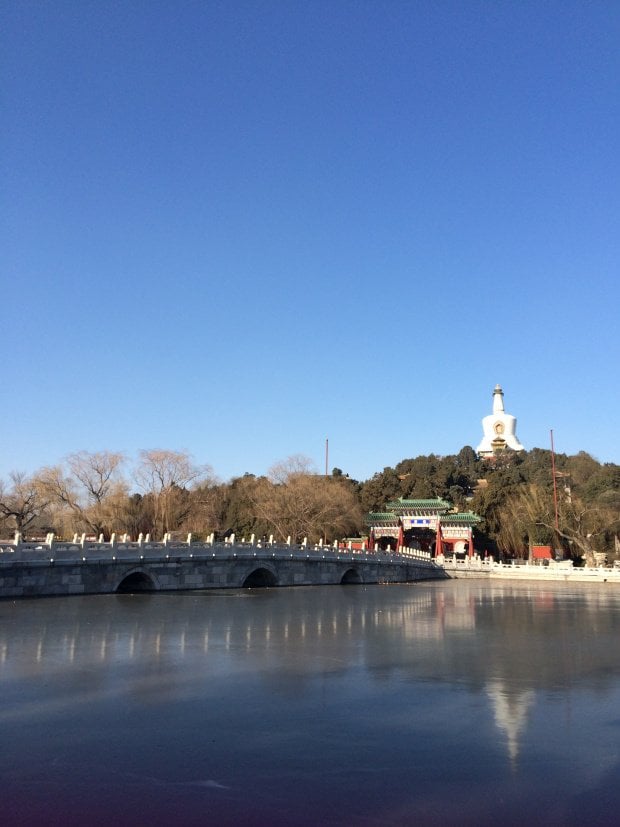
The park is renowned for its exquisite landscaping, showcasing the pinnacle of traditional Chinese garden design. From serene lakes and ornate pavilions to majestic palaces and ancient temples, Beihai Park offers a tranquil escape from the bustling city and a glimpse into the beauty and sophistication of Imperial China.
10. Getting lost in the cool Hutongs 胡同 and courtyards 四合院
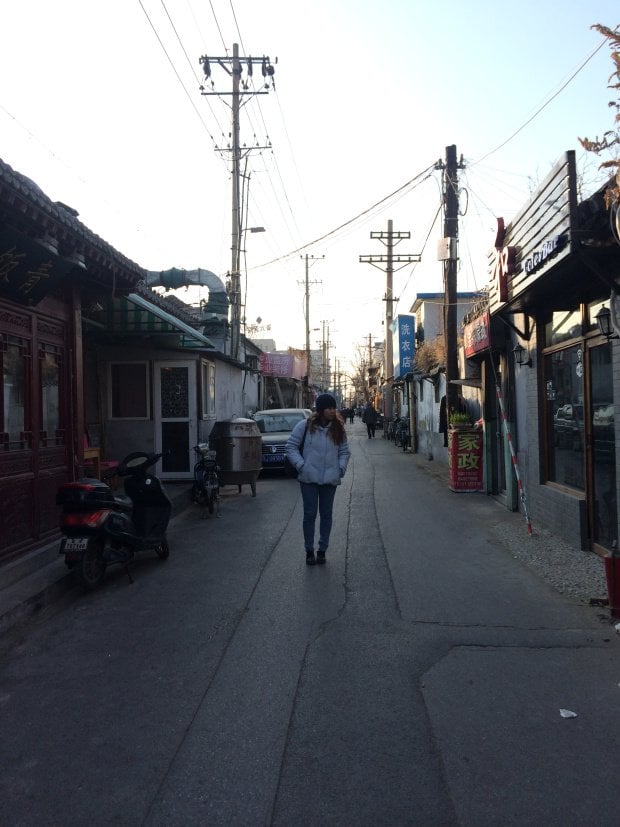
Wandering through the labyrinthine hutongs of Beijing is an unforgettable experience. These traditional alleyways, steeped in history, offer a glimpse into the heart of the city. Discover hidden gems tucked away within these narrow lanes, from charming family-owned eateries and art galleries to quaint teahouses and vintage shops.
The hutongs, with their intricate network of interconnected alleys, provide a unique insight into the social fabric of Beijing. Close-knit communities have thrived within these alleyways for centuries, fostering a strong sense of belonging and neighbourly camaraderie.
However, navigating the hutongs can be a bit challenging. It’s easy to get lost in the maze of alleyways, so be sure to consult your map frequently. Despite the occasional navigational hiccup, exploring the hutongs offers a truly authentic and rewarding experience, allowing you to discover the soul of Beijing.
11. Eating Peking Duck / Beijing Kao Ya 北京烤鸭
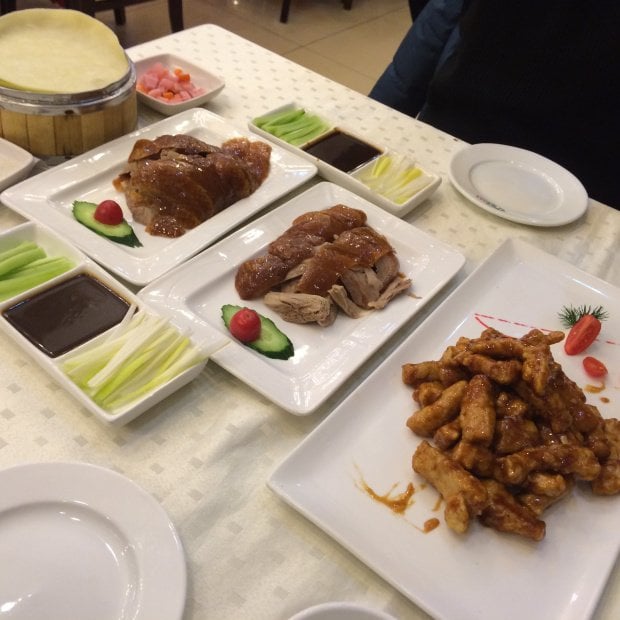
It is almost a crime not to try the famous Beijing Roasted Duck here. Peking Duck is a famous duck dish from Beijing that is prized for its thin, crisp skin, with authentic versions of the dish serving mostly the skin and little meat, sliced in front of the diners by the cook. FYI Peking Duck doesn’t originate from Beijing though. It actually came from Nanjing.
Two notable restaurants in Beijing which serve this dish are Quanjude and Bianyifang, both centuries-old establishments which have become household names, each with their own style.
12. Artsy fartsy in 798 Arts distinct
I have to admit that I am not very appreciative of these art pieces but still impressive to look at. There are plenty of art galleries and studios around this area. Cool graffiti too.
13. Long Qing Gorge 龙庆峡
Unfortunately, we missed our chance to visit Longqing Gorge during our trip. This scenic area, known for its breathtaking gorges, is typically open from 9:00 to 17:00 from April to November, and from January to the end of February.
Longqing Gorge is often compared to the grandeur of the Three Gorges of the Yangtze River, though its mountains are even more dramatic. The crystal-clear waters of the gorge also bear a striking resemblance to the Li River in Guilin.
For adventurous visitors, Longqing Gorge offers a range of exciting activities, including bungee jumping, scenic cable car rides, and leisurely boat trips on the river (all available at an additional cost). In winter, the gorge transforms into a magical wonderland, hosting a spectacular Ice Lantern Festival from January to February.
14. Xiang Shan Gong Yuan 香山公园
Catch the most spectacular autumn scene in Xiang Shan Gong Yuan. The red leaves blankets over the mountains in the fall. Didn’t manage to catch the autumn here.
15. Shidu Nature Park 十渡镇
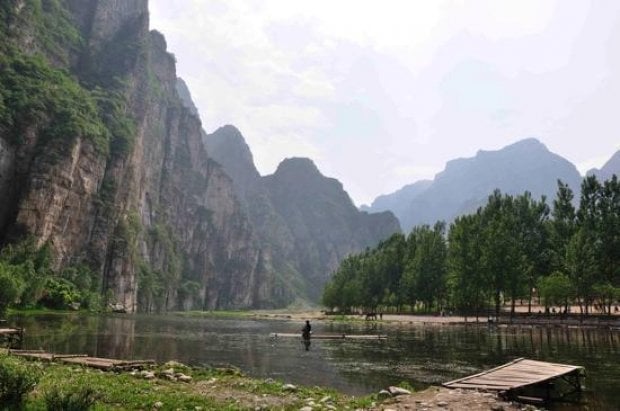
Shidu Nature Park, renowned for its dramatic karst landscapes, was unfortunately closed during our visit. This scenic area, open from June to October and from January to the end of February, boasts breathtaking scenery often compared to the Three Gorges of the Yangtze River, though with even more dramatic cliffs.
Shidu offers a range of exciting activities, including bungee jumping, scenic cable car rides, and boat trips on the river. The park also hosts a spectacular Ice Lantern Festival during the winter months. While we missed experiencing Shidu firsthand, it remains a highly recommended destination for future travellers.
b. What to do / where to go in Inner Mongolia
1. Go to a grassland and desert tour
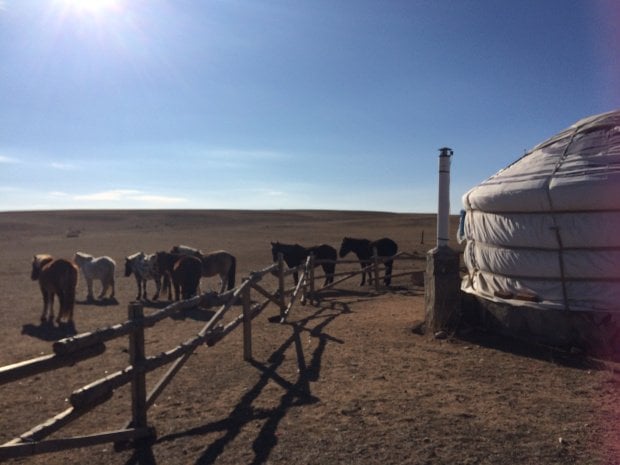
The highlight of our Inner Mongolia adventure was undoubtedly the 2-day, 1-night grassland and desert tour organized by Anda Guesthouse. We were fortunate to join another traveller, making the tour more cost-effective. Our hosts, Yongli and her husband (affectionately known as “Dà Shū”), provided exceptional hospitality, ensuring a truly memorable experience.
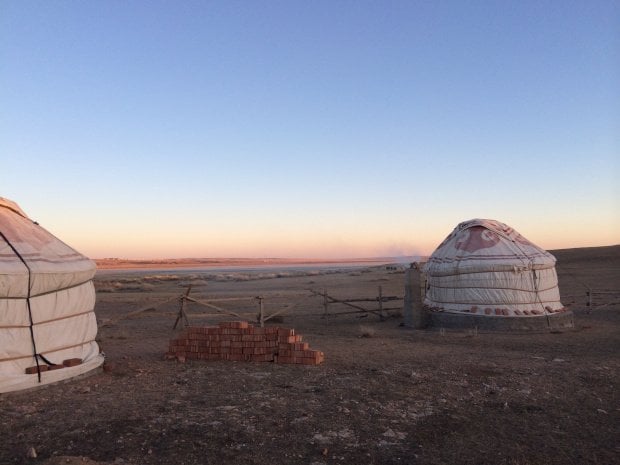
The grassland tour, while challenging in the winter with its frigid temperatures and snow-covered landscape, offered a unique perspective. We spent our nights in a traditional Mongolian yurt, a truly authentic experience. We enjoyed simple pleasures like gathering firewood and learning about Mongolian culture from our hosts.
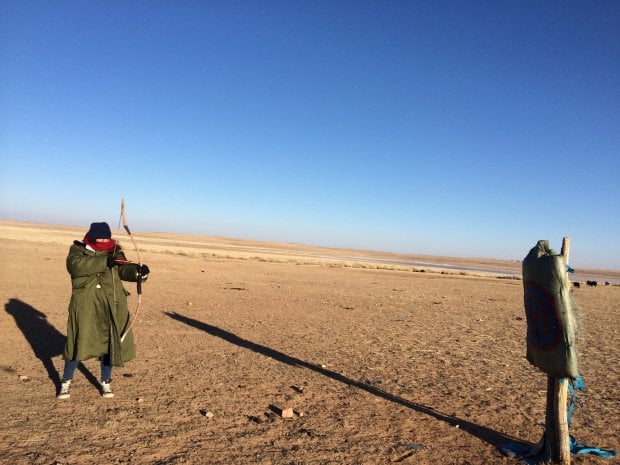
The desert portion of the trip was equally unforgettable, though the strong winds and blowing sand presented a unique set of challenges. We enjoyed camel riding and sandboarding while marveling at the vast and awe-inspiring desert landscape. The highlight, however, was witnessing the breathtaking sunset, painting the sky in vibrant hues.
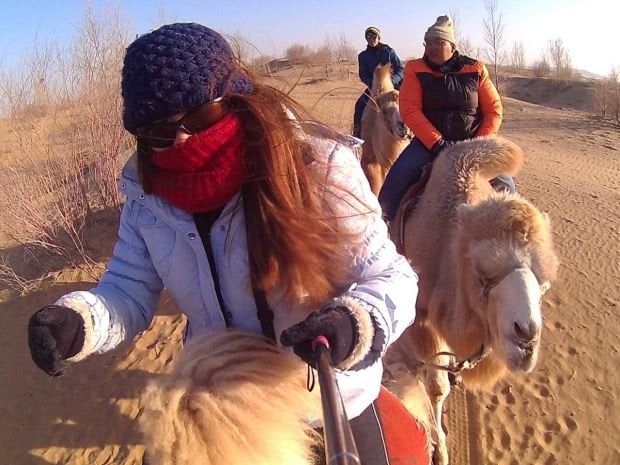
This unforgettable adventure in Inner Mongolia, with its unique blend of cultural immersion and breathtaking scenery, will forever remain a cherished memory for me!
2. Eating the street food
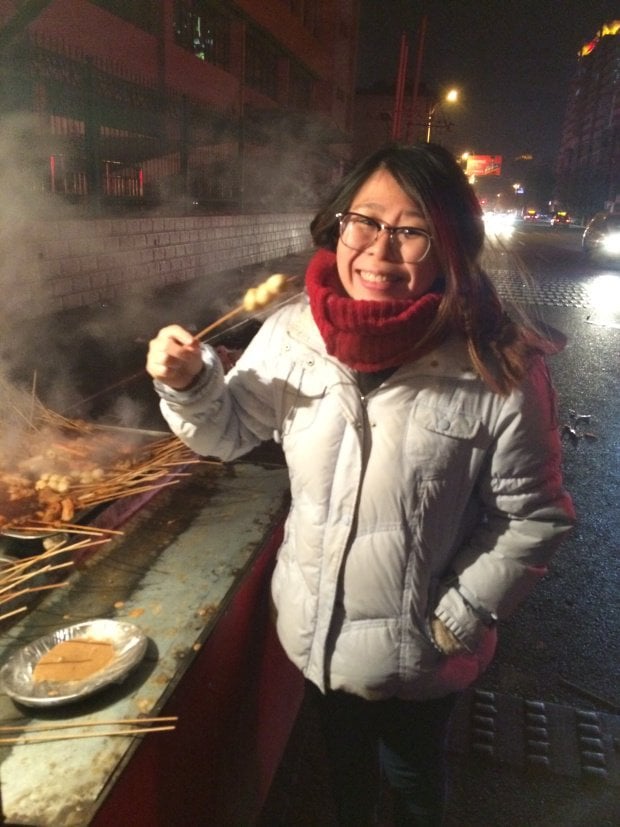
Hohhot is a true foodie’s paradise! Given the region’s vast grasslands, mutton is a culinary cornerstone. While I’m not typically a fan of mutton, the local preparations were incredibly flavorful and surprisingly delicate.
Remember to try some of the more adventurous local dishes, such as fried insects, for a truly authentic experience.
3. Mosques-visiting
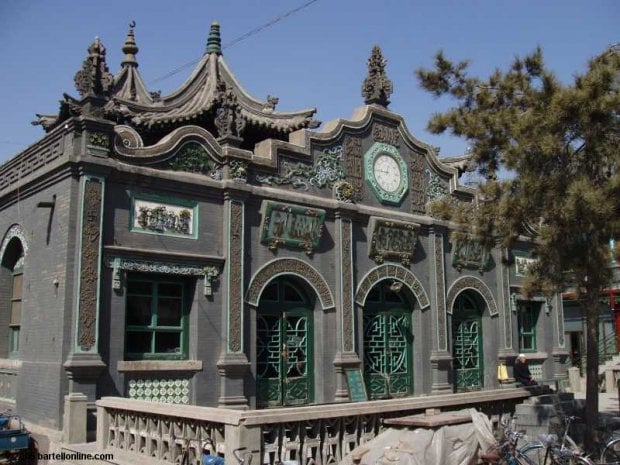
Unfortunately, our tight schedule prevented us from visiting a mosque during our trip. However, exploring the Islamic influence in Inner Mongolia would be a fascinating addition to any itinerary.
This trip to Beijing and Inner Mongolia was an unforgettable adventure. Despite the initial uncertainties and the unexpected challenges, it turned out to be one of the most rewarding travel experiences I’ve ever had. China, with its rich history, diverse cultures, and breathtaking landscapes, captivated us at every turn.
The kindness and hospitality of the Chinese people were truly remarkable. From our generous hostel hosts in Hohhot to the friendly strangers who offered their assistance, we experienced genuine warmth and generosity throughout our journey.
This trip has left me eager to explore more of this vast and fascinating country. I’m already planning future adventures to Xinjiang, Tibet, Yunnan, and Chengdu, each with its own unique cultural identity.
Contributed by buttergoesbudget.





